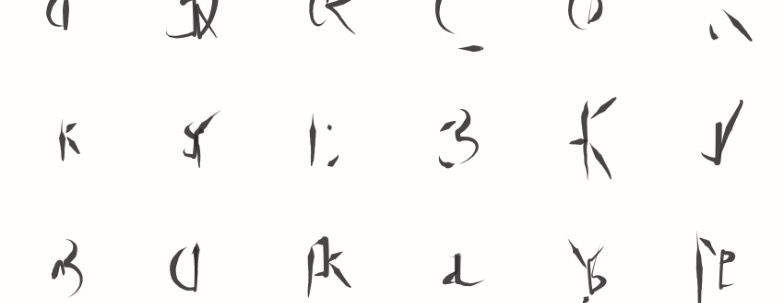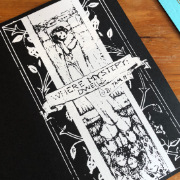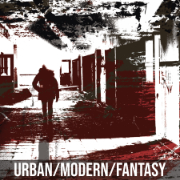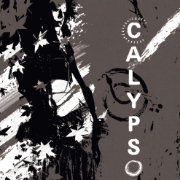Choosing Fonts For TTRPGs

filed under game design and layout on 28 May 2021 tagged fonts and layout
This is a series of posts on choosing pleasant fonts for laying out tabletop rpgs. A tabletop RPG book is a technical document, but it is also meant to be read for pleasure, and sometimes it can be hard to meet both of those goals! No guide can teach you an eye for this, but there are rules you can follow to get a more professional look.
This series will not delve into basic layout stuff like whitespace, margins, and how many columns to use. A good place to start if you want to explore those basics is Butterick’s Typography in Ten and The Explorers Company’s layout and the grid.
Consider your purpose and format. Are you laying out for printing at home, or for print through POD, or for digital pdf, or for some combination of the three? Do you have a vibe or feel in mind? An art style you want to match or a feeling you want to evoke? Keep these questions in mind as you browse. As a general rule of thumb, the more formats you’re trying to satisfy at once, the more “safe” your font choices should be.
In this series, I will be using my own works as examples, along with unpublished mockups (that are not optimized so be kind). In general, assume a document that’s 6x9 or 5.5x8.5, CMYK, with a half inch inner margin (plus .125” for gutter, so .625 total), a one inch outer margin, a one and a half inch bottom margin, and a one inch top margin. My paragraphs tend to be short and my sentences punchy (and yes, this matters).
A project will usually require at least two fonts, one for body text, and one for section headers. You may also need to differentiate some phrases as game mechanics, technical terms, examples, and table references. It’s common to use one of your body font’s faces, like italic or bold-italic, for in-game examples, but you may want a different font entirely, or to use the “sans” version of your body (or header) font if one is available. Stylized fonts for chapter heads or for the cover may also be needed.
You want a body font that has, at a minimum, regular (or book), italic, and bold faces. Italic-bold and small caps are very nice to have as well. You can do interesting things here, once you master Text Styles, but there are plenty of good font options with all four faces available. Ideally all the fonts you use will convey tone and style, contain a full punctuation set, and be licensed for embedding into a pdf for distribution commercially.
Licenses & gotchas
I am not a lawyer, only a hobbyist like you. Everything I share here is gleaned from reading foundry licenses, through trial and error, and by muddling through. My priority is always to honor the designer’s wishes, and the way they communicate those wishes is via a license.
If you’re planning on distributing a pdf through drivethru or itch.io, you’re looking for a font licensed for embedding into a pdf for distribution commercially. This is more complicated then it seems, because from an outside hobbyist perspective, licensing is not standardized at all!
Some foundries consider “embedding” to be part of what’s called an “ebook” license, almost always charged at a per issue or per book rate. Others consider a pdf that is not editable to be covered under a “desktop” license, which is usually more reasonably priced but still often well outside of hobby or even small business funds. Still others, usually much cheaper up front (“300 fonts for $10!” style bundles), allow you to only use a font “rasterized” which means that you’ve converted it to an image and it is no longer searchable as text – which more or less restricts it to use as a cover font.
The only way to be sure is to read the license.
So what do we do, if we want clean, professional fonts for a hobby price or, better yet, for free? One option is to buy fonts as you please from places with licenses that make you happy, keeping your files sorted by the licenses and terms you purchased under. If you take this route, be sure to save a pdf copy of the license, as some shops seem to change licenses yearly!
My preferred option is to use open-licensed fonts, focusing on those that are licensed under the SIL/OFL. Google Fonts is a very well-curated collection of fonts like this. Fontesk also offers ways to filter by license.
I would advise against using Creative Commons licensed fonts. This is a generous gesture by the designer, but fonts are recognized as software, and requiring attribution introduces a strange wrinkle in our area of the hobby. For a book, adding “font by…” seems simple enough, maybe something you’re already doing, but what about a deck of cards, or a business card RPG? A logo? At the very least, be careful with it, as it signals that the author has very specific wishes you’ll want to be sure to honor if you use their work.
Miscellaneous tips
- My favorite place to browse fonts is Fontesk. Though they have quite a few personal use only or commercial fonts in addition to the OFL fonts, the curation is good and the search is great. I also quite like Behance Fonts, but virtually every font on there has a unique license to be aware of or requires signing up for a free acount elsewhere.
- Sites like fontjoy and beautiful web type are very helpful, and Fonts In Use will inspire!
- If you’re interested in delving into typography, consider Flickr and Behance for typography. You can also search pinterest for terms like “page number design” and “typography”; just be sure to search by boards, not just pins, for the best results.
Next week, we’ll start going over some font pairings for various effects.


